Cultural Computation:
Artificial Intelligence, Machine Learning, Playful Algorithms have been central to i-DAT’s research for many years. Quorum builds on this rich history and creates playful synergies between audience behaviours, interactive media environments, physical objects (or things) and modern integrative, sub-symbolic, computational techniques. Quorum proposes new analytical techniques which focus on enhancing audience engagement through the use of conversational AI, Artificial Neural Networks, Self Organising Maps and Deep Learning Networks to innovatively integrate subjective and objective data.
Some historical projects:

QUORUMSCAPE integrates the Quorum algorithmic tools into a real-time geo-located CityScape simulation. An alpha version was release for the Mediacity (http://mediacity.i-dat.org/) conference and SAT ix Symposium (http://ix.sat.qc.ca/node/359?language=en), with further upgrades for the the Tate Modern Turbine Hall Festival (http://i-dat.org/tate-modern-data-jam-250715/) and the Big Buzz Plymouth event (http://bit.ly/1WJFTBQ) and Cairotronica. A stable distribution with mobile/Samsung Gear VR was commissioned by Design Informatics/Edinburgh University for the Edinburgh Cityscope Project.
Eco-OS:

Eco-OS explores ecologies. Eco-OS further develops the sensor model embedded in the Arch-OS system through the manufacture and distribution of networked environmental sensor devices. Eco-OS provides a new networked architecture for internal and external environments. Networked and location aware data gathered from within an environment can be transmitted within the system or to the Eco-OS server for processing. Eco-OS collects data from an environment through the network of ecoids and provides the public, artists, engineers and scientists with a real time model of the environment. Eco-OS provides a range of networked environmental sensors (ecoids) for rural, urban, work and domestic environments. They extend the concept developed through the Arch-OS and i-500 projects by implementing specific sensors that transmit data to the Operating Systems Core Database.

S.T.I. is funded by the SciArt programme (supported by the ACE, the British Council, the Calouste Gulbenkian Foundation, SAC, the Wellcome Trust and NESTA)., and turns the technologies that look to deep space for Alien Intelligence back onto Planet Earth in a quest for ‘evidence’ of Terrestrial Intelligence. Looking at Earth from space the project will develop processing techniques using autonomous computer software agents. S.T.I. moves beyond irony by engaging with our understanding of the ‘real world’ through our senses, whether real or artificially enhanced. Will these autonomous systems ‘know’ the ‘truth’ when they ‘see’ it? The S.T.I. Consortium: STAR, Dr Guido Bugmann, Dr Angelo Cangelosi, Laurent Mignonneau, Christa Sommerer, Dr Nick Veck.
https://i-dat.org/2000-sti-search-for-terrestrial-intelligence/

The city-wide collaborative pilot was produced by i-DAT and Plymouth Arts Centre with the Plymouth Culture Guide Group: Theatre Royal Plymouth, Barbican Theatre, Plymouth City Museum and Gallery, The Gallery at Plymouth College of Art, Peninsula Arts Plymouth University, KARST, Ocean Studios, Take a Part, Plymouth Dance and Plymouth Culture. The App was designed and developed by Elixel with i-DAT, the branding was designed by Intercity and the front and backend system based on the ‘analytics engine’ Qualia, developed by i-DAT at the University of Plymouth, University of Warwick and Cheltenham Festivals 2013, through a Nesta Digital R&D award.

Qualia is a ground-breaking digital technology and research project, which aims to revolutionize the way audience experiences at arts and culture events are evaluated. Incorporating mobile phone apps, information pods and online analytical tools Qualia can significantly enhance your audience evaluation techniques and improve engagement. The Qualia Web Engine is a sophisticated platform with an open API that can plug into a range of platforms. It can also scrape data from existing websites for easy access to scheduling data. Qualia ‘harvests’ audience data from a range of sources, such as Social Networking API’s (such as Facebook and Twitter), venue ‘hotspots’ (audio monitoring, smile recognition and GPS tracking). Qualia captures qualitative metrics that provide feedback on how an audience ‘feels’.

This Is Where We Are (TIWWA) is an immersive and interactive algorithmic sculpture fuelled by the data we collectively generate. Engage, interact and play with the swarm algorithms that generate this dynamic digital artwork created by i-DAT working with Tate Collective London for the opening of the new Tate Modern building on the 17 – 19 June 2016. TIWWA explores: Behavioural data: individual and collective movement and touch. Sensors will capture our collective movements through the studio space / Social media data: Hashtags #Tatemodern will help collect the ideas and sentiment of present and distant audiences / Environmental data: Temperature, Co2, Humidity and Energy Consumption, captured by the Buildings Energy Management System, representing the life of the building and the collective behaviour of its inhabitants.
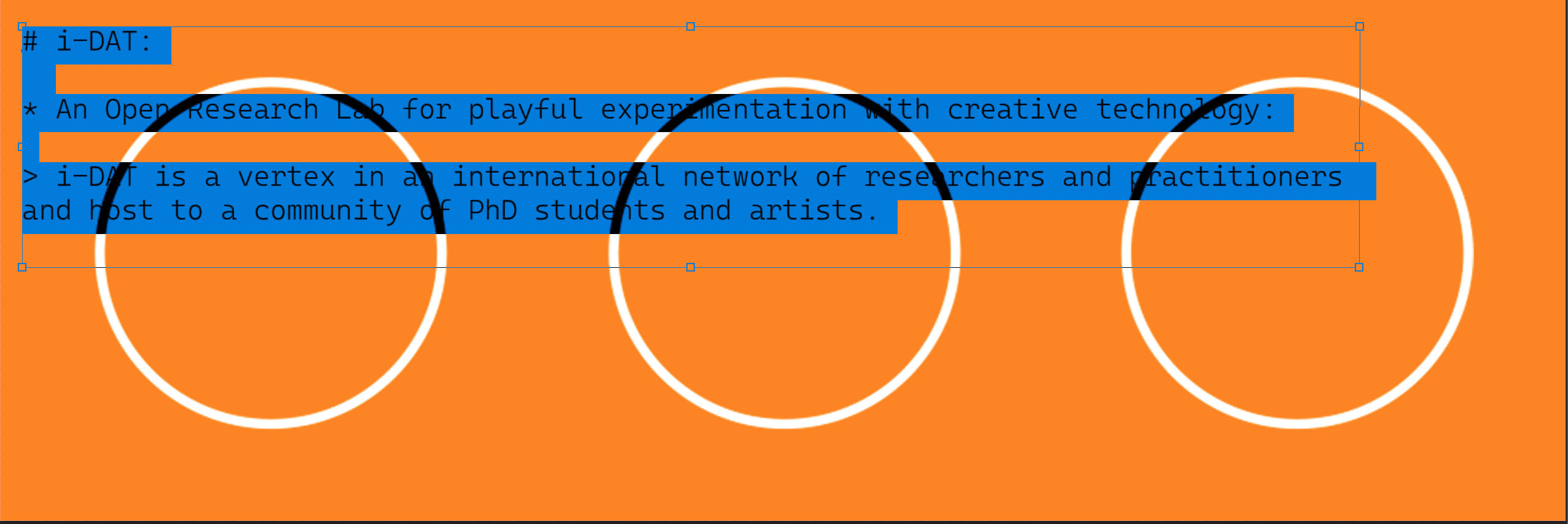
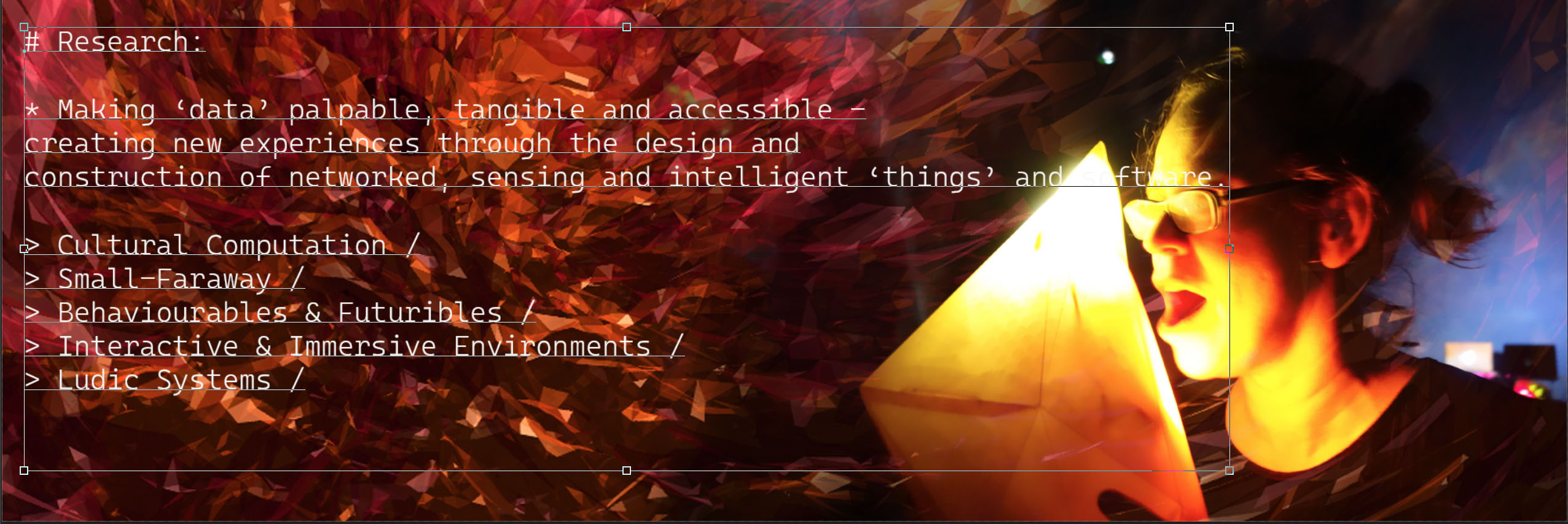
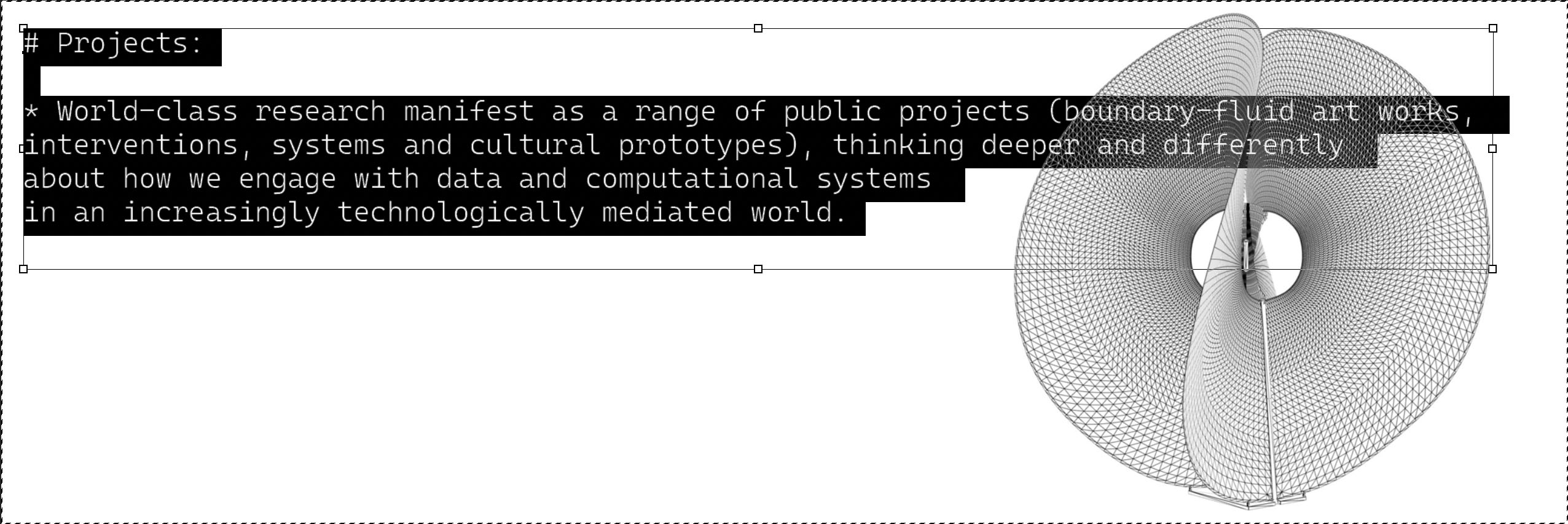
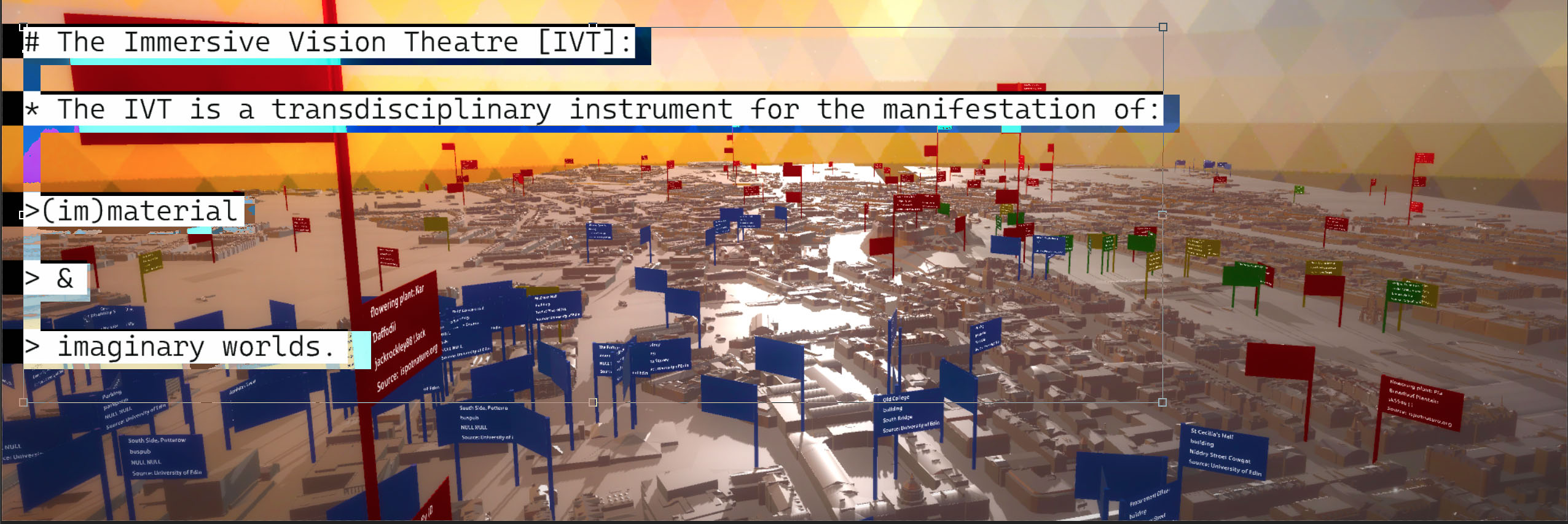
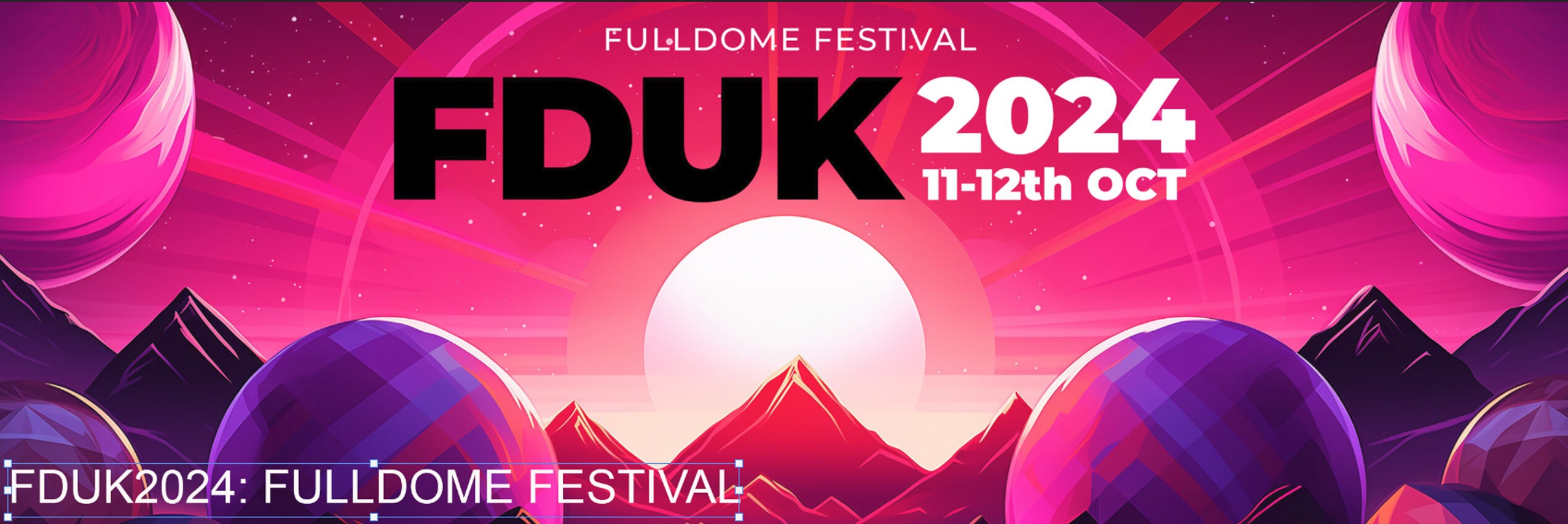
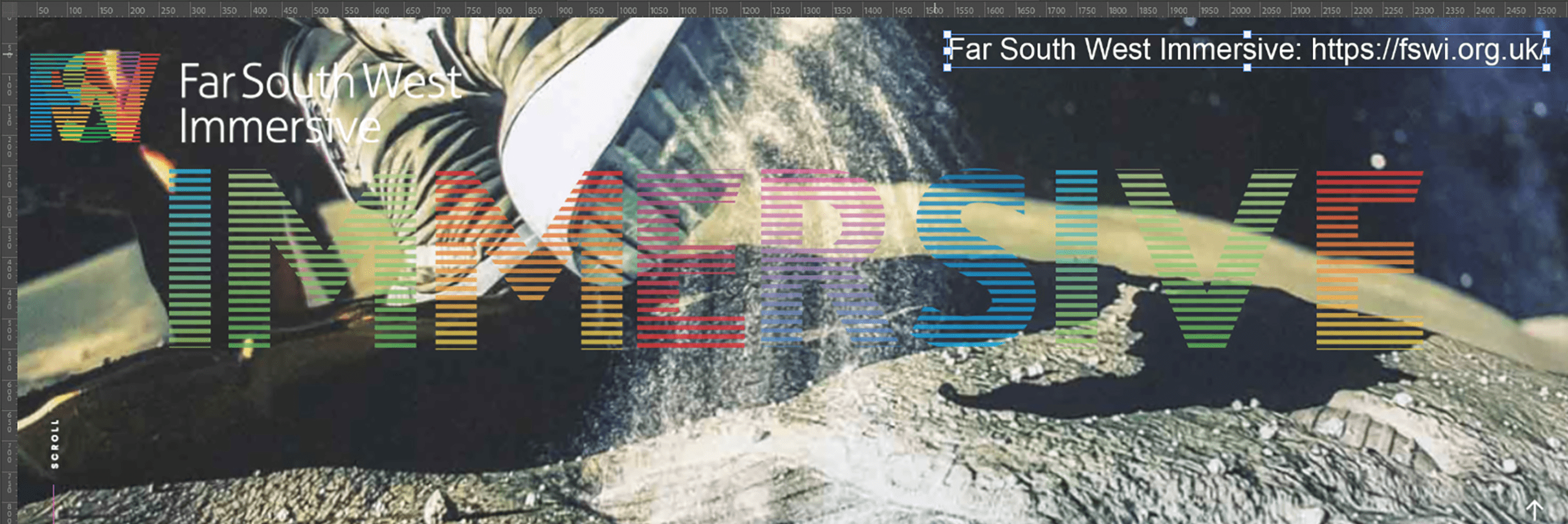
You must be logged in to post a comment.